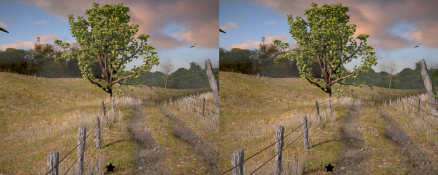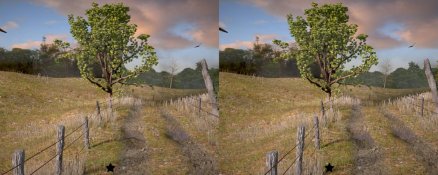Arctic amateur
Member
Hello,
I've been toying with the idea of taking some extreme-stereo landscape pictures this spring, when the light returns. By "extreme" I mean camera separation from 20 cm to 2 m. Why? Because it sounds fun. I'd get stereoscopic vision of landscape elements that my eyes can't see as 3D because they're too far away. I'm hoping for kind of a "miniature" effect analogous to what you'd get with tilt-shift, but using 3D instead of focus.
I'd be using two analog SLRs, probably on separate tripods, with cable releases. I can't use just one camera and move it, because grass and waves will move and ruin the stereoscopic effect, and if the images work out I might want to take the gear out on the fjord in a small boat.
My available equipment is a Nikon FE2 with a 50mm and a 28-84mm zoom, and a Practica Super TL with a choice of 50mm and 28mm lens. I'd probably start with BW negative film, but I might try slide afterwards. Or perhaps buy two Holgas and shoot nice big slides? 3D viewer and mounts are available from Lomography society for both 135 and 120, so it should be easy to setup.
So, questions. Any pitfalls I should be aware of? Is 28mm too wide? 50mm too narrow? Shutter timing too unreliable? Aiming too difficult?
(I also have an F70 with a 50mm and a 28-200 zoom, but I'd rather use the old cameras and lenses that are cheaply replaced if I stumble and drop them, not to mention easier to carry on a hike.)
I've been toying with the idea of taking some extreme-stereo landscape pictures this spring, when the light returns. By "extreme" I mean camera separation from 20 cm to 2 m. Why? Because it sounds fun. I'd get stereoscopic vision of landscape elements that my eyes can't see as 3D because they're too far away. I'm hoping for kind of a "miniature" effect analogous to what you'd get with tilt-shift, but using 3D instead of focus.
I'd be using two analog SLRs, probably on separate tripods, with cable releases. I can't use just one camera and move it, because grass and waves will move and ruin the stereoscopic effect, and if the images work out I might want to take the gear out on the fjord in a small boat.
My available equipment is a Nikon FE2 with a 50mm and a 28-84mm zoom, and a Practica Super TL with a choice of 50mm and 28mm lens. I'd probably start with BW negative film, but I might try slide afterwards. Or perhaps buy two Holgas and shoot nice big slides? 3D viewer and mounts are available from Lomography society for both 135 and 120, so it should be easy to setup.
So, questions. Any pitfalls I should be aware of? Is 28mm too wide? 50mm too narrow? Shutter timing too unreliable? Aiming too difficult?
(I also have an F70 with a 50mm and a 28-200 zoom, but I'd rather use the old cameras and lenses that are cheaply replaced if I stumble and drop them, not to mention easier to carry on a hike.)
Last edited by a moderator:












